Group project curated by Elena Siemens

Early evening in NYC, the dusk transforms a hot-dog cart into a magic lantern. The traffic lights show three seconds to go. There is a customer near the hot-dog cart, as well as a lamp post crowned with a large One Way sign. Who or what is the protagonist here?
Traffic Lights Pop-Up 4: Mixed Signals addresses chaotic urban life where traffic lights must compete for attention with clusters of other signals and sites. Daido Moriyama’s “blurry, grainy, and out of focus” photos of his native Japan provide an ample evidence of this urban chaos (Jackie Higgins). “I like taking snapshots in the movement of both myself and the outside world,” Moriyama states (Jackie Higgins). Traffic Lights 4 features entries by student groups Aquarium and Windows, as well as guest contributions from Berlin, Vienna, and São Paulo.
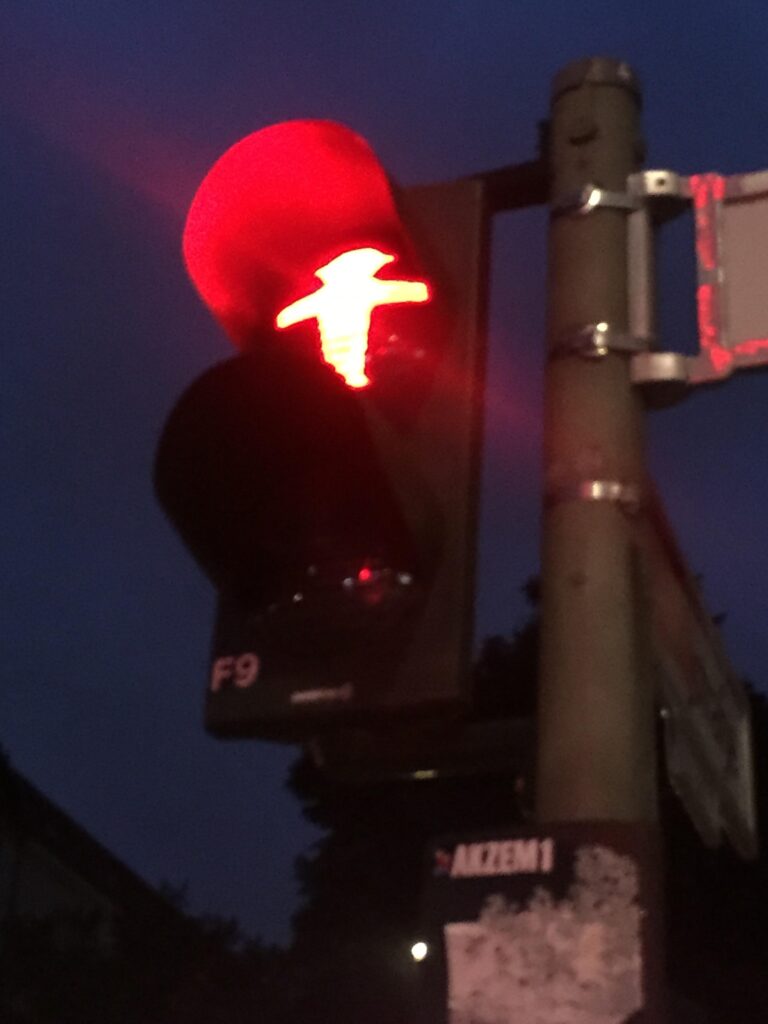
William Klein’s Life is Good & Good for You in New York – an inspiration for Moriyama’s photography – depicts “a crowded and often hostile city.” Klein welcomes “Grain, blur, contrast, accidents, cockeyed framing, no problem” (Klein qtd. in Livingston). This sensibility also informs Klein’s fashion images for French Vogue. His iconic 1960 photograph capturing two models crossing a zebra intersection in Rome “balances monochrome cool and traffic chaos” (Tim Adams, the Guardian 2022).
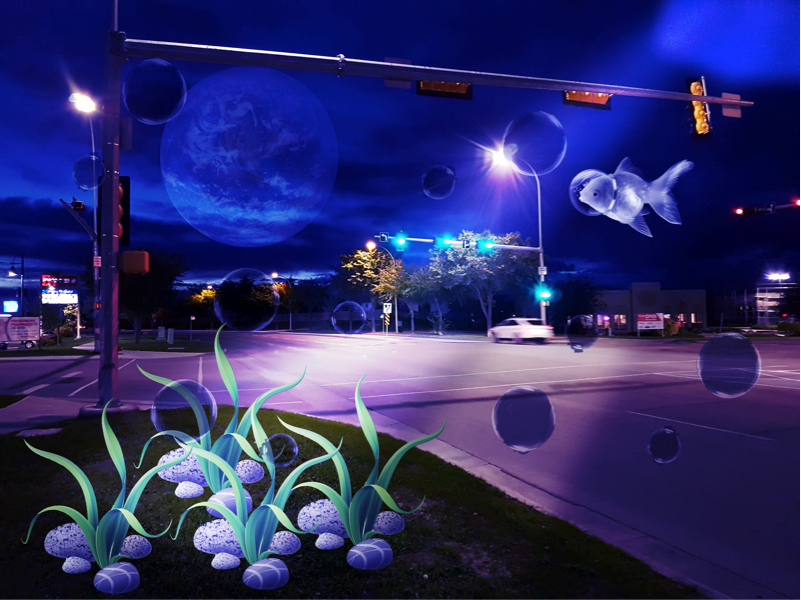
Emery Theroux: “The surrealistic features of my photo act as a factitious reality representing how “things extra and other” insert themselves into the accepted framework which rules the streetway. It is a commentary on how the second, poetic geography of a location acts as superfluous debris which guides walkers. “Things that amount to nothing [. . .] like dreams or pedestrian rhetoric” are attached to street names and walkways (De Certeau). The planet is there to represent the voyeuristic perspective you attain when far removed from the position of the walker. The planet used in the image is actually Earth, allowing you an extremely exaggerated voyeuristic top down—not quite panoramic, yet still a removed view of the planet.”
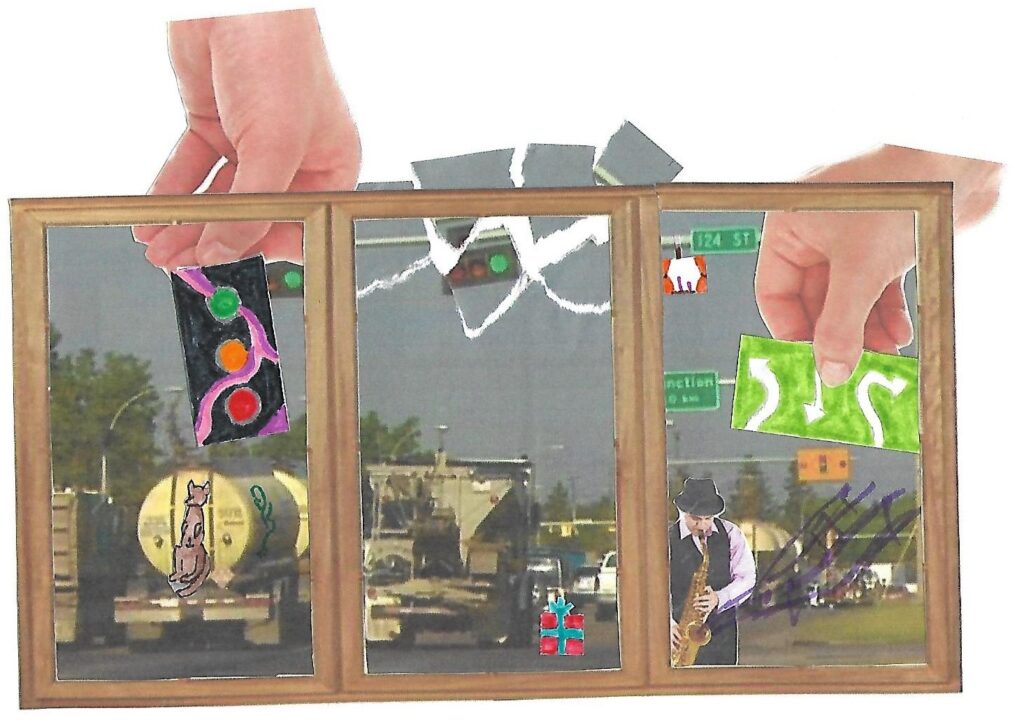
Erin Anderson: “The musician and the vague smatterings of graffiti are a connection to Douglas Coupland’s Lion’s Gate Bridge – the idea that these breaks in New Town monotony do not necessarily have to be grand fragmentations; instead, they can be as simple as Coupland’s bridge temporarily transforming into a concert hall as the saxophonist plays to the surrounding cars. I’d argue that moments like these take function and transform the New Town, or do away with it, allowing the post-New Town to flourish” (Coupland)
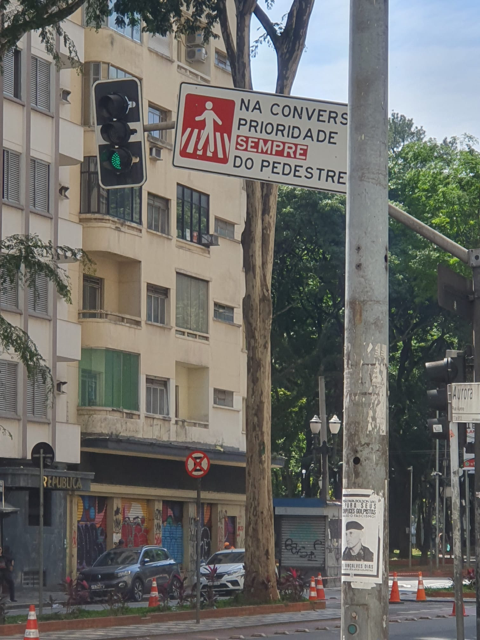
Laurin Mackowitz: “This is at the corner of Avenia Viera de Carvalho, Rue Aurora, Republica, São Paulo, Brazil. I really liked the street name Aurora (it inspires awe and terror), and the poster for a rally against the coup attempt by Bolsonaro supporters.”

Stefanie Valcheva: “Vienna – 5th district, there’s nothing unusual about this traffic light, except that it shows two female figures.”
“Untitled” by Athena Arlinghaus
The moon ascends into the violet sky
Upon her celestial throne;
The wanderer’s favourite traffic light
Reminds him he isn’t alone
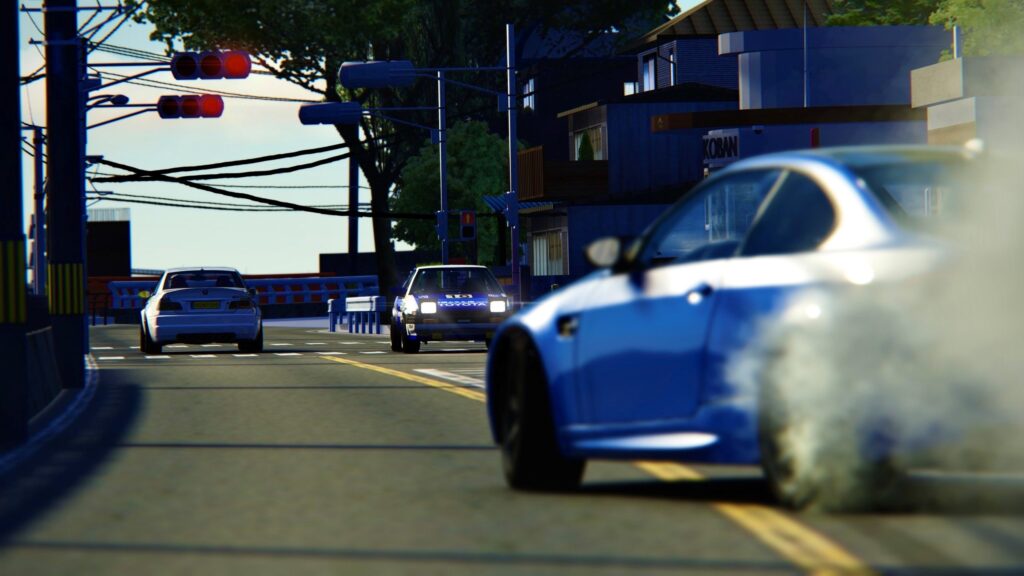
Artemiy Valchkou: “I took this image in a virtual world, albeit during a real event. The car is operated by real people, using equipment designed to simulate real vehicle forces, performed on detailed recreations of real-world locations in Japan. My image gains a surreal quality where it exists in both the real world as a personal experience, but also the virtual world as a simulation of that same experience. In many ways, the emergence of the digital world is similar to the emergence of the new town as described by Lefebvre: “…I see these ‘machines for living in’…” (Lefebvre)

There are no traffic lights in New York’s Central Park. Horse-driven carriages are the only traffic here. Compared to cars at the nearby Columbus Circle, the carriages move slowly. Nevertheless, they are not easy to photograph, especially if you aim to capture an entire carriage and a particular backdrop. What you get, instead, is a blurry, fragmented image. You are frustrated, but then you realize there is poetry to it, and a surprise of the unexpected: how did that get in there? Was this why Moriyama liked taking photos “in the movement”?
Elena Siemens (Univ. of Alberta)
Read Part 3 here.
